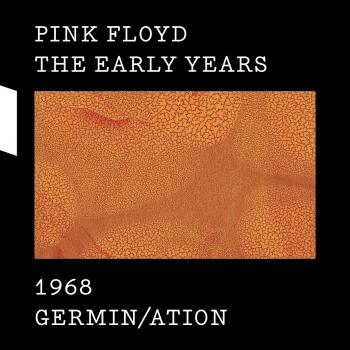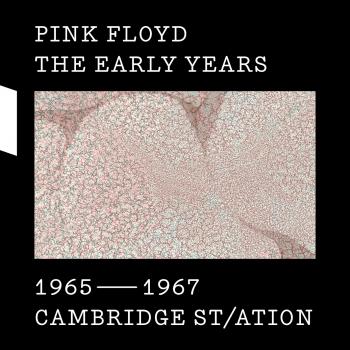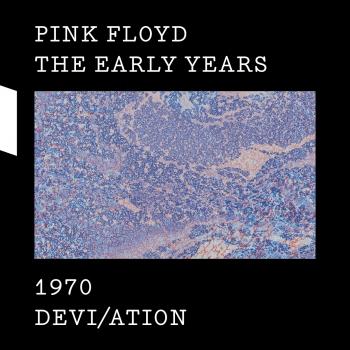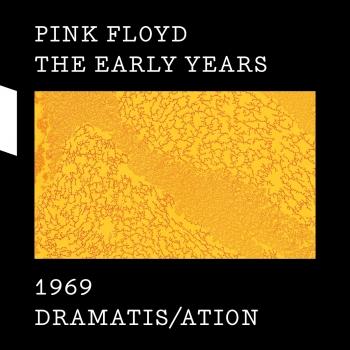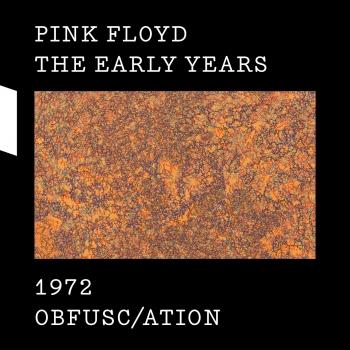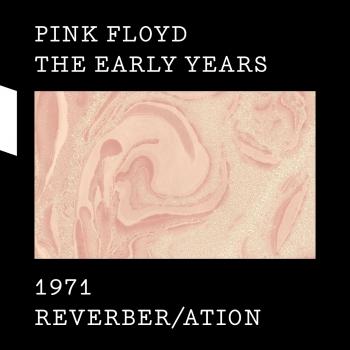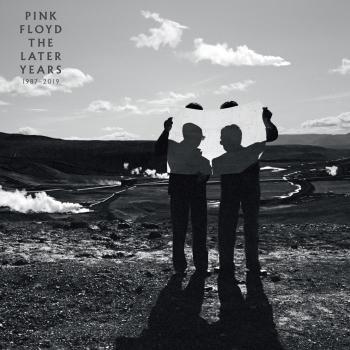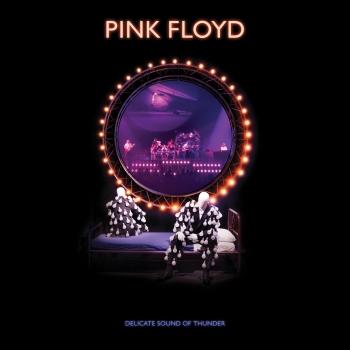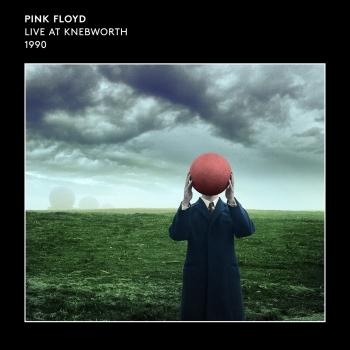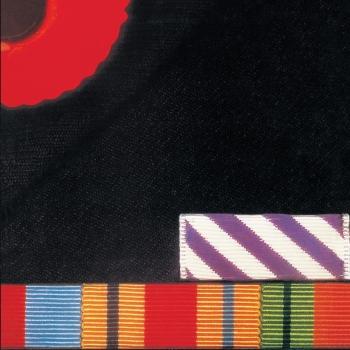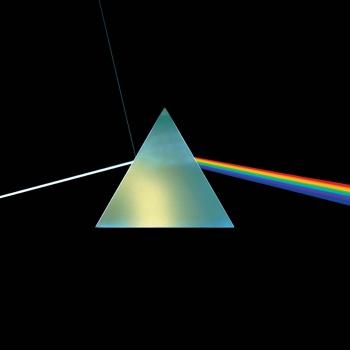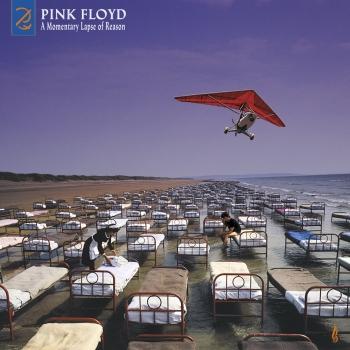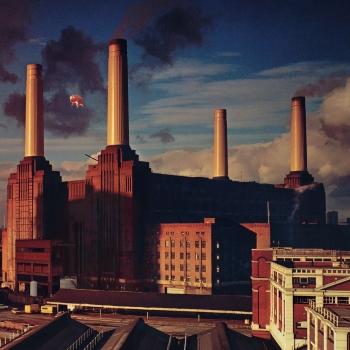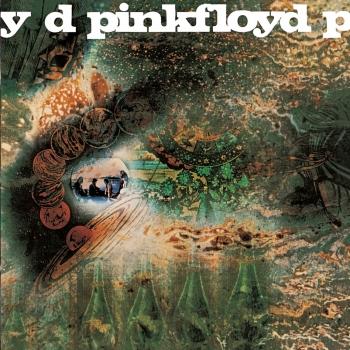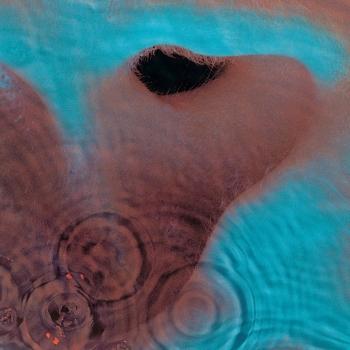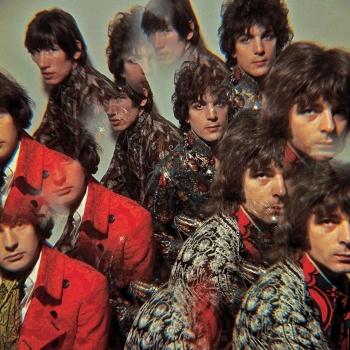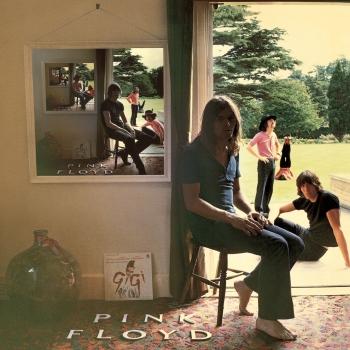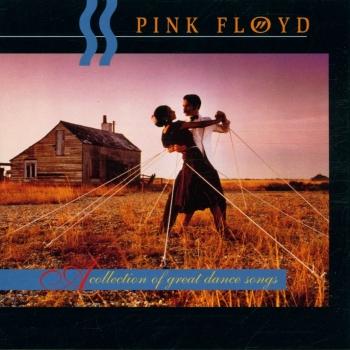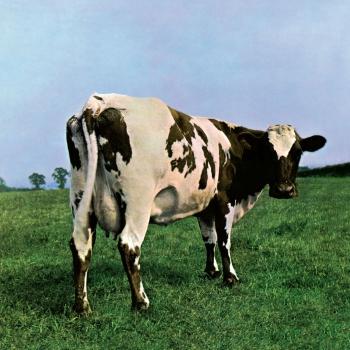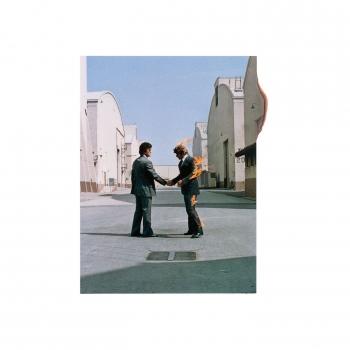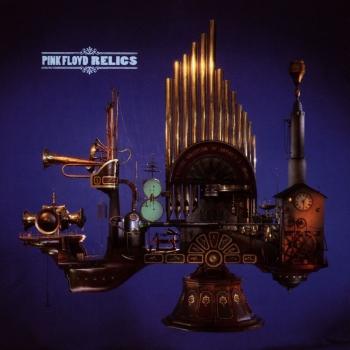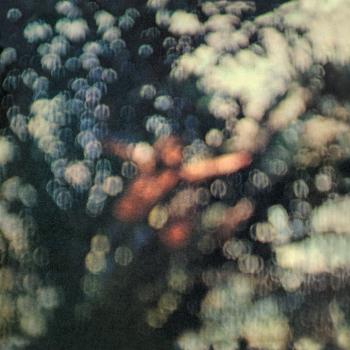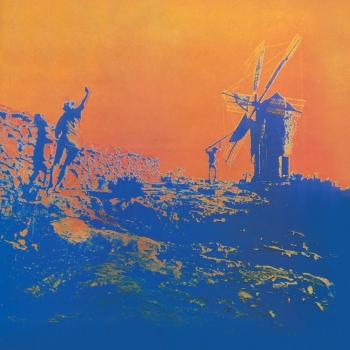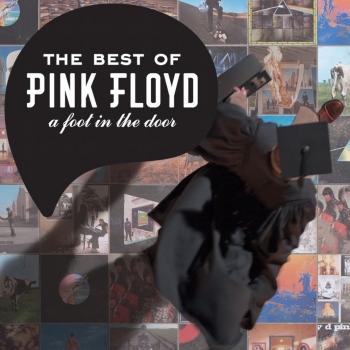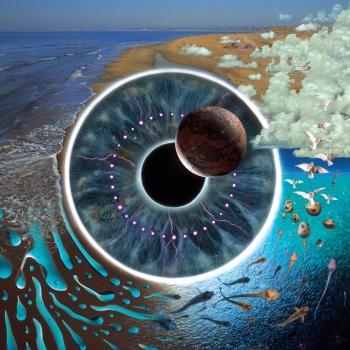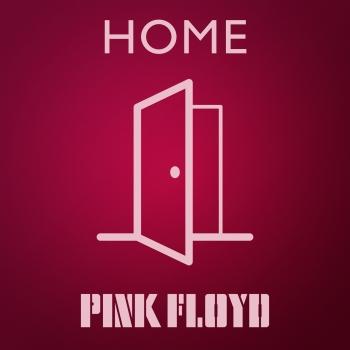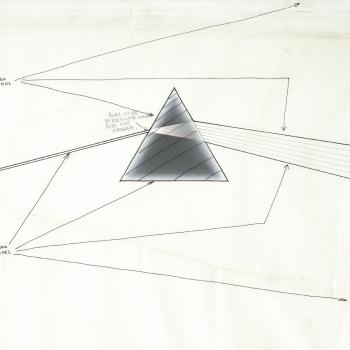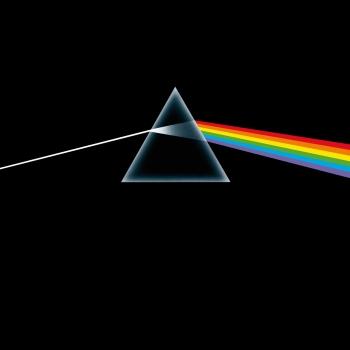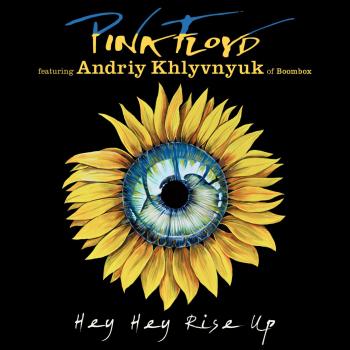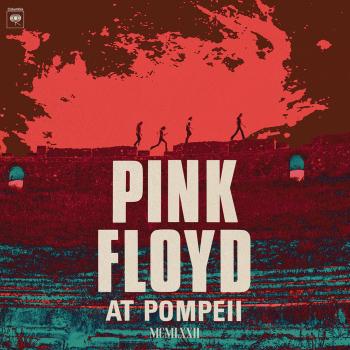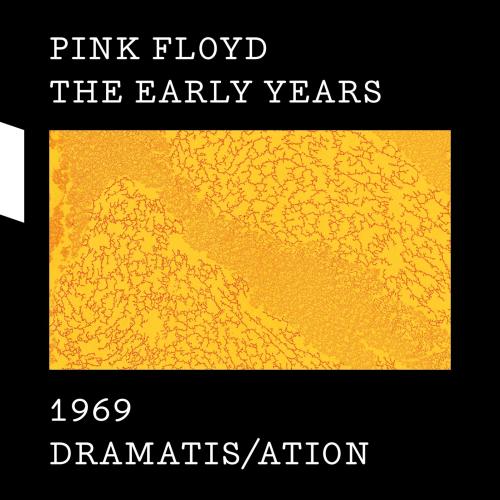
The Early Years 1969 DRAMATIS/ATION Pink Floyd
Album Info
Album Veröffentlichung:
2017
HRA-Veröffentlichung:
03.04.2017
Das Album enthält Albumcover
Entschuldigen Sie bitte!
Sehr geehrter HIGHRESAUDIO Besucher,
leider kann das Album zurzeit aufgrund von Länder- und Lizenzbeschränkungen nicht gekauft werden oder uns liegt der offizielle Veröffentlichungstermin für Ihr Land noch nicht vor. Wir aktualisieren unsere Veröffentlichungstermine ein- bis zweimal die Woche. Bitte schauen Sie ab und zu mal wieder rein.
Wir empfehlen Ihnen das Album auf Ihre Merkliste zu setzen.
Wir bedanken uns für Ihr Verständnis und Ihre Geduld.
Ihr, HIGHRESAUDIO
- 1 Hollywood 01:21
- 2 Theme From Film 'More' (Beat Version) 03:54
- 3 More Blues (Alternative Version) 03:49
- 4 Seabirds (Instrumental) 04:20
- 5 Embryo (From 'Picnic') 04:42
- 6 Grantchester Meadows (BBC Radio Session, 12 May 1969) 03:46
- 7 Cymbaline (BBC Session, 12 May 1969) 03:39
- 8 The Narrow Way (BBC Radio Session, 12 May 1969) 04:36
- 9 Green Is The Colour (BBC Session, 12 May 1969) 03:21
- 10 Careful With That Axe, Eugene (BBC Session, 12 May 1969) 03:27
- 11 Interstellar Overdrive (Live At The Paradiso, Amsterdam, 9 August 1969) 04:23
- 12 Set The Controls For The Heart Of The Sun (Live At The Paradiso, Amsterdam, 9 August 1969) 12:25
- 13 Careful With That Axe, Eugene (Live At The Paradiso, Amsterdam, 9 August 1969) 10:10
- 14 A Saucerful Of Secrets (Live At The Paradiso, Amsterdam, 9 August 1969) 13:01
- 15 Daybreak ('The Man' Performed At Concertgebouw, Amsterdam, 17 September 1969) 08:14
- 16 Work ('The Man' Performed At Concertgebouw, Amsterdam, 17 September 1969) 04:12
- 17 Afternoon ('The Man' Performed At Concertgebouw, Amsterdam, 17 September 1969) 06:38
- 18 Doing It ('The Man' Performed At Concertgebouw, Amsterdam, 17 September 1969) 03:54
- 19 Sleeping ('The Man' Performed At Concertgebouw, Amsterdam, 17 September 1969) 04:36
- 20 Nightmare ('The Man' Performed At Concertgebouw, Amsterdam, 17 September 1969) 09:14
- 21 Labyrinth ('The Man' Performed At Concertgebouw, Amsterdam, 17 September 1969) 01:11
- 22 The Beginning ('The Journey' Performed At Concertgebouw, Amsterdam, 17 September 1969) 03:23
- 23 Beset By Creatures Of The Deep ('The Journey' Performed At Concertgebouw, Amsterdam, 17 September 1969) 06:27
- 24 The Narrow Way, Part 3 ('The Journey' Performed At Concertgebouw, Amsterdam, 17 September 1969) 05:10
- 25 The Pink Jungle ('The Journey' Performed At Concertgebouw, Amsterdam, 17 September 1969) 04:56
- 26 The Labyrinths Of Auximines ('The Journey' Performed At Concertgebouw, Amsterdam, 17 September 1969) 03:19
- 27 Footsteps / Doors ('The Journey' Performed At Concertgebouw, Amsterdam, 17 September 1969) 03:12
- 28 Behold The Temple Of Light ('The Journey' Performed At Concertgebouw, Amsterdam, 17 September 1969) 05:32
- 29 The End Of The Beginning ('The Journey' Performed At Concertgebouw, Amsterdam, 17 September 1969) 06:31
Info zu The Early Years 1969 DRAMATIS/ATION
Pink Floyd sind tief in ihr riesiges Musikarchiv eingetaucht, bis zurück an den frühen Beginn ihrer Karriere, um sechs individuelle High-Res-Remaster zu produzieren, das bisher nie veröffentlichtes Material enthält.
"The Early Years 1965 – 1972" wird Sammlern die Gelegenheit geben, die Evolution der Band von ihren frühesten Aufnahmen an bis zu den Sessions in den Jahren vor "The Dark Side Of The Moon", eines der meistverkauften Alben aller Zeiten, nachzuvollziehen und zu verfolgen, wie Pink Floyd ihren Anteil zu einer kulturellen Revolution beitrugen. Von der Single "Arnold Layne" bis hin zum 20-minütigen Epos "Echoes" können die Fans die Erfindung des Psychedelic Progressiv Rock verfolgen. Die aufschlussreiche Kollektion erkundet die Pink Floyd-Story von der Zeit an, als Roger Waters, Richard Wright, Nick Mason und Syd Barrett an der Londoner Regent Street Polytechnic aufeinandertrafen, bis Syd Barrett die Band verließ und David Gilmour das ikonische Line-Up vervollständigte.
Dramatis/ation: Im Jahre 1969 enthüllten PINK FLOYD ihre zweiteilig konzipierte Live-Produktion von "The Man" und "The Journey", die eine 24-stündige Zeitspanne von Träumen, Aufwachen und anderen Aktivitäten umfasst. Das Werk wurde nie in dieser Form veröffentlicht, wenn auch einige der Songs auf dem Soundtrack "More" und dem Album "Ummagumma" benutzt wurden. Dieser Teil der Box blickt zurück auf die Tour zu "The Man" und "The Journey" und präsentiert Live-Performances aus Amsterdam und Performances für die BBC London, enthält aber auch die Bonustracks aus dem "More"-Soundtrack, die im Film, aber nicht auf dem Album zu hören waren. Außerdem gibt es Non-Album-Tracks wie eine frühe Version von Embryo aus dem Harvest-Sampler "Picnic". Das Videomaterial zeigt 20 Minuten aus den Proben zu "The Man"/"The Journey" in der Royal Festival Hall unter der Regie von Anthony Stern. Unter den Aufnahmen finden sich Afternoon (Biding My Time), The Beginning (Green Is The Colour), Cymbaline, Beset By Creatures Of The Deep und The End Of The Beginning (der letzte Teil von "A Saucerful Of Secrets") sowie weiteres Performance-Footage aus jenem Jahr.
David Gilmour, lead vocals, guitars
Roger Waters, bass, lead vocals on "Set the Controls for the Heart of the Sun" and "Grantchester Meadows", acoustic guitar on "Grantchester Meadows"
Richard Wright, keyboards, backing vocals
Nick Mason, drums, percussion
Frank Zappa, guitar on "Interstellar Overdrive"
Digitally remastered
Pink Floyd
Inductees: Syd Barrett (guitar, vocals; born January 6, 1946; died July 7, 2006), David Gilmour (guitar, vocals; born March 6, 1944), Nick Mason (drums; born January 27, 1945), Roger Waters (bass, synthesizer, vocals; born September 9, 1944), Rick Wright (keyboards, synthesizers; born July 28, 1945; died September 15, 2008).
Pink Floyd’s hallucinatory presentation of lights and music at London’s Roundhouse in 1966 brought psychedelia to the U.K. scene. The group carried rock and roll into a dimension that was more cerebral and conceptual than what preceded it. What George Orwell and Ray Bradbury were to literature, Pink Floyd is to popular music, forging an unsettling but provocative combination of science fiction and social commentary. In their early years, with vocalist, guitarist and songwriter Syd Barrett at the helm, Pink Floyd were the psychedelic Pied Pipers of the “London underground” scene. In the Seventies, with bassist Roger Waters providing more of the songwriting and direction, Pink Floyd became one of the most influential rock bands of all time.
Before they settled on Pink Floyd, the group went by the names Sigma 6 and the Architectural Abdabs, and they mainly performed rhythm and blues covers. Singer-guitarist Syd Barrett provided Pink Floyd with most of its original early material, including the British hits “See Emily Play” and “Arnold Layne.” Barrett’s elfin, tuneful psychedelia made him the Lewis Carroll of the pop scene. Pink Floyd’s debut album, Piper at the Gates of Dawn, is a classic of psychedelic whimsy that epitomized the remarkable year of 1967 at its most playful and creative. As the British music magazine Q opined in 1995, “Piper at the Gates of Dawn is, even counting Sgt. Pepper, possibly the defining moment of English psychedelia and Syd Barrett’s magnum opus.” Among its highlights was a nine-minute instrumental, “Interstellar Overdrive,” that represented one of rock’s first forays into deep space. It was a preoccupation of Pink Floyd’s that would later surface in songs like “Set the Controls for the Heart of the Sun” (from A Saucerful of Secrets) and the group’s masterwork, Dark Side of the Moon.
Intense experimentation with LSD unfortunately transported Barrett from enlightenment to mental instability, and increasingly unpredictable behavior necessitated his departure from Pink Floyd in 1968. Among the prime “acid casualties” of the Sixties, Barrett subsequently released two magnificent, if eccentric, solo albums – The Madcap Laughs and Barrett, both from 1970 – with considerable input from his erstwhile bandmates in Pink Floyd. Thereafter, however, Barrett became one of rock’s most legendary hermits and the subject of Roger Waters’ tributary opus “Shine On You Crazy Diamond.” It was the side-long centerpiece of Pink Floyd’s Wish You Were Here (1975) and a sterling example of what the group has referred to as its recurring “theme of absence.”
With guitarist David Gilmour on-board as Barrett’s replacement, Pink Floyd’s lineup remained constant for the next 15 years. In the wake of Piper, they recorded psychedelic soundscapes such as A Saucerful of Secrets and the double album Ummagumma, which comprised one disc of live performances and one of individual works by each band member. Laid-back but experimental, Pink Floyd kicked off the Seventies with the pastoral, atmospheric albums Atom Heart Mother (1970) and Meddle (1971). Each featured a side-long epic, “Atom Heart Mother Suite” and “Echoes,” respectively. Fittingly for a band with who took a cinematic approach to music, Pink Floyd provided music for three films. Their work as film scorers can be heard on the soundtrack albums More (1969), Zabriskie Point (1970) and Obscured by Clouds: Music from La Vallee (1972).
Their 1973 release Dark Side of the Moon hit Number One on the Billboard charts and ultimately broke all records by remaining on the Top 200 album charts for 741 weeks. Dark Side of the Moon did not drop off Billboard’s Top 200 album chart until 1988. The album signaled rock’s willingness to move from adolescence into adulthood, conceptually addressing such subjects as aging, madness, money and time. From its prismatic cover artwork to the music therein, Dark Side of the Moon is a classic-rock milestone. The subject of alienation was further explored in Wish You Were Here (1975), an album whose central preoccupation was the band members’ distance from each other (“Wish You Were Here”) and erstwhile leader Syd Barrett’s distance from reality (“Shine On You Crazy Diamond”). They turned their gaze outward yet again on the Orwellian Animals (1977), whose songs bore the titles “Pigs,” “Sheep” and “Dogs.”
Success continued into the Eighties with The Wall, a four-sided epic about a rock star named Pink who suffers a nervous breakdown while on tour. Much of it reflected chief architect Roger Waters’ dim view of the concert experience as rock expanded into arenas and stadiums. “I wanted to make comparisons between rock and roll concerts and war,” Roger Waters toldRolling Stone in 1982. He elaborated on this central tenet in the liner notes forThe Wall Live: 1980-81: “The idea that we, as individuals, generally find it necessary to avoid or deny the painful aspects of our experience, and in fact often use them as bricks in a wall behind which we may sometimes find shelter, but behind which we may just as easily become emotionally immured, relatively simply stated and easy to grasp.” That, in a nutshell, is the theme pursued by Pink Floyd from Dark Side of the Moon forward.
Possibly the most pessimistic album ever to reach #1, The Wall also addressed childhood, education and marriage, finding all of these passages to be dehumanizing. The Wall, the most theatrical and complex stage show that rock had ever seen, was performed 24 times in multi-night stands at four places - London, Los Angeles, Long Island and Dortmund, Germany. During the performance, an actual “wall” was constructed in front of the band, and its collapse at the end provided a fitting denouement. The Wall was subsequently revived by Roger Waters for a star-studded staging in Berlin in 1990, to commemorate the unification of East and West Germany. Performances from the Pink Floyd’s original staging of the epic saw release in 2000 as The Wall Live: 1980-81.
In the wake of The Wall, Pink Floyd itself gradually seemed to collapse, at least temporarily. The Wall turned out to be the last album the foursome of Waters, Gilmour, Wright and Mason recorded together. The Final Cut, which was recorded under extreme duress, found Wright absent from the group. Almost wholly Waters’ vision, it was an antiwar album triggered by Britain’s 1982 conflict in the Falkland Islands. The group unofficially disbanded after its release, and that seemed to mark the end of Pink Floyd, as the members involved themselves in endeavors, including solo projects, outside the band.
Throughout their history, the members of Pink Floyd have projected a rather static personal image, allowing music, lyrics, lighting and theatrical settings to communicate for them. Consequently, they’ve largely avoided the sort of public scrutiny that typifies the lives of rock stars. Little was known or reported about their personal lives. Only when a bitter war of words and a court battle erupted between Roger Waters and the others after Gilmour, Mason and Wright reconvened Pink Floyd was the silence broken.
Pink Floyd released Momentary Lapse of Reason in 1987 and followed it up a year later with Delicate Sound of Thunder, a live album drawn from an extensive tour. The group reconvened in the Nineties with Gilmour again at the helm, releasing The Division Bell in 1994 and another tour souvenir,Pulse, a year later. Both albums went to the top of the charts, proving that the public’s fascination with this most unconventional supergroup had not dimmed in the least. (Source: www.rockhall.com)
Dieses Album enthält kein Booklet










